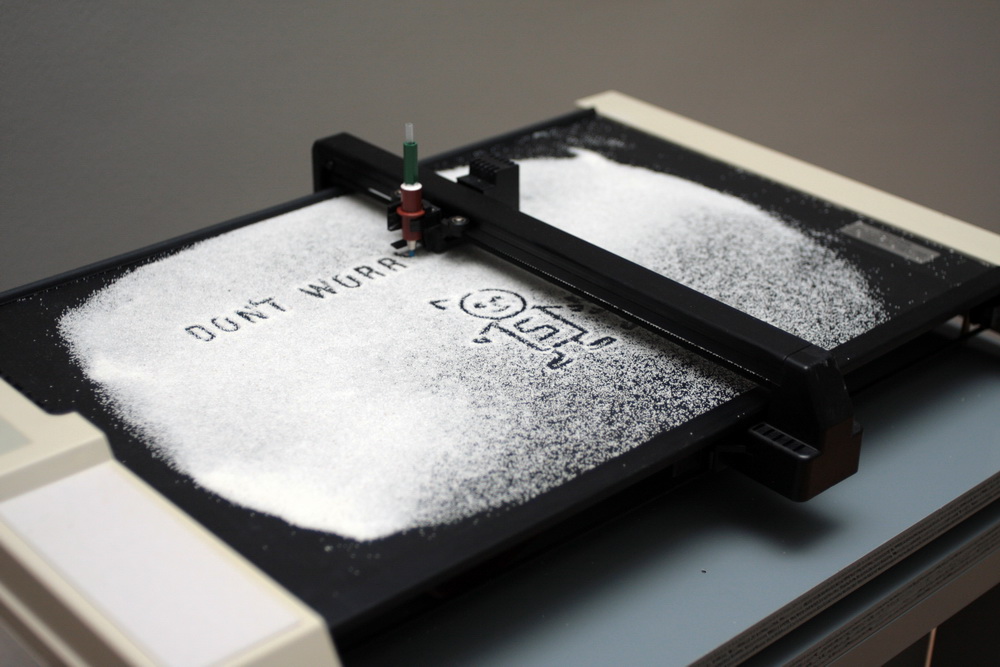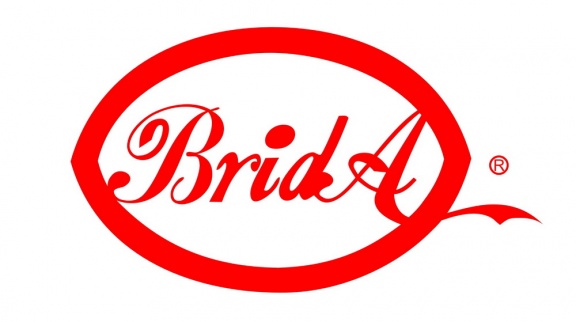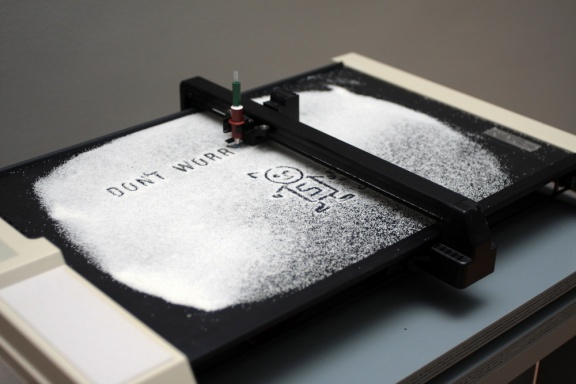Difference between revisions of "BridA"
Maja Škerbot (talk | contribs) (new teaser, working, sa) |
|||
| Line 13: | Line 13: | ||
{{Teaser| | {{Teaser| | ||
| − | + | The representative of the Slovenian young generation of artists BridA / Jurij Pavlica, Sendi Mango, Tom Kerševan questions the artistic content and researches the contemporary society with the help of art and science. Since the formation during their studies at the Academy of Fine Arts of Venice in [[established::1996]], BridA has developed a series of artistic projects on the international level. | |
| + | Selected by Charles Esche BridA is taking part in the 6th edition ot the [[U3 Triennial of Contemporary Slovene Arts]]. | ||
}} | }} | ||
| − | |||
| − | + | The artistic production of BridA is based around videos, graphic arts, painting, photography and multimedia installations. The continuous passage from the two-dimensional artistic surface in a tri-dimensional space is reversible and alternating. For BridA the search for the path and the process of creation is more important than the final product. The processes of research and technological application are part of the artistic creation and are oriented in an artistic production, which acts as an independent body and can be self-updated and self-completed. | |
| + | |||
| + | The BridA combines technology and artistic thought. Up to now none of the three members of the collective wanted to work as an independent artist stating that: “Working within a group opens new or different boundaries. All we do is always in the spirit of the group. We almost never operate individually, which could be compared to some kind of perpetual artistic action. Our experience is in itself somewhat particular and in such a manner could not exist individually; therefore we could say that working as a collective has an impact also on the personal life of each individual. Within a group there is a great potential that enables us to operate effectively from idea to realisation in a very rapid manner. This fact is especially evident when searching for new ideas that are immediately confronted and analyzed thus enabling a more interesting turnout of idea. Similarly with the actual realisation process where the teamwork is even more effective.”. | ||
| + | |||
| + | In October 2006 BridA cooperated with the ZKM Zentrum fur Kunst und Mediatechnologie in Karlsruhe, where it developed the project Modux. In February 2007, after being invited by the European commissioner for science and technology Janez Potočnik, BridA presented its projects in Brussels within the framework of the initiative for the support of science and technology. In June 2008 they took part in the artistic residence in Fondazione Ratti Como. In September 2008 BridA exhibited their project Modux 3.4 at the Ars Electronica festival in Linz. In September 2009 they presented their project Trackeds Como at the [[Ljubljana International Biennial of Graphic Art]] curated by Božidar Zrinski. In October 2009 BridA presented their work at Columbia University in New York and the University of Maine. Since February 2009 they are partners in the Time for Nano project launched by the European Commission. | ||
| + | |||
| + | |||
[[Category:New media art]] | [[Category:New media art]] | ||
Revision as of 14:57, 26 June 2010
-
to
24 Aug 2018
12 Sep 2018
Martin Bricelj Baraga (MoTA Museum of Transitory Art) and Simon Jacquemin (collective Bellastock) curate a series of interactive artworks on the banks of the Esentai River, featuring Vodoskop by BridA, an interactive bridge capturing and visualising live water data; Aryk-o-phone, a river instrument played by the river; and Lumitronome, a solar powered kinetic light installation, supported by the Embassy of the Republic of Slovenia Moscow,
-
to
31 Oct 2015
22 Nov 2015
Modux/Storieincorso, an exhibition and video installation by the Collective BridA (Tom Kerševan, Sendi Mango and Jurij Pavlica)
-
to
18 Sep 2015
20 Sep 2015
Projects Origami Space Race by Sašo Sedlaček (Aksioma Institute) and Spreadkom by BridA at the Abandon Normal Devices Festival,
-
to
19 Mar 2015
19 May 2015
-
to
21 Oct 2014
15 Nov 2014
An artists panel discussion by BridA (Tom Kerševan, Jurij Pavlica and Sendi Mango) and DE.fragmentation, a joint exhibition curated by BridA and featuring works by BridA, Irena Pivka, Brane Zorman (RadioCona), Primož Bizjak, Maja Smrekar, Bogdan Soban, Arjan Pregl, Anja Medved, Saso Sedlaček, Igor Štromajer (Intima Virtual Base), and Miha Tursič, Špela Petrič & Maja Murnik,
-
to
14 Mar 2014
13 Apr 2014
DE.fragmentation, a joint exhibition also featuring works by Tom Kerševan, Sendi Mango, Jurij Pavlica (BridA), Irena Pivka, Brane Zorman (RadioCona), Arjan Pregl, and Igor Štromajer (Intima Virtual Base)
-
to
6 Jun 2013
24 Jun 2013
-
to
25 Sep 2012
8 Dec 2012
Change the Colour! exhibition by BridA (Tom Kerševan, Sendi Mango, Jurij Pavlica), produced by International Centre of Graphic Arts, Ljubljana
-
to
3 Jul 2011
27 Nov 2011
Rok Bogataj, BridA and Živko Marušič at the free port of art, first CEI (Central European Initiative) Trieste exhibition of contemporary visual art
-
to
8 Oct 2010
28 Oct 2010
A plus A Gallery and Obalne galerije - Coastal Galleries coorganise the exhibition E-motion to cohabitat with the works by Marjetica Potrč, BridA, Kolektiva, Vesna Bukovec, Lada Cerar, and Metka Zupanič
The artistic production of BridA is based around videos, graphic arts, painting, photography and multimedia installations. The continuous passage from the two-dimensional artistic surface in a tri-dimensional space is reversible and alternating. For BridA the search for the path and the process of creation is more important than the final product. The processes of research and technological application are part of the artistic creation and are oriented in an artistic production, which acts as an independent body and can be self-updated and self-completed.
The BridA combines technology and artistic thought. Up to now none of the three members of the collective wanted to work as an independent artist stating that: “Working within a group opens new or different boundaries. All we do is always in the spirit of the group. We almost never operate individually, which could be compared to some kind of perpetual artistic action. Our experience is in itself somewhat particular and in such a manner could not exist individually; therefore we could say that working as a collective has an impact also on the personal life of each individual. Within a group there is a great potential that enables us to operate effectively from idea to realisation in a very rapid manner. This fact is especially evident when searching for new ideas that are immediately confronted and analyzed thus enabling a more interesting turnout of idea. Similarly with the actual realisation process where the teamwork is even more effective.”.
In October 2006 BridA cooperated with the ZKM Zentrum fur Kunst und Mediatechnologie in Karlsruhe, where it developed the project Modux. In February 2007, after being invited by the European commissioner for science and technology Janez Potočnik, BridA presented its projects in Brussels within the framework of the initiative for the support of science and technology. In June 2008 they took part in the artistic residence in Fondazione Ratti Como. In September 2008 BridA exhibited their project Modux 3.4 at the Ars Electronica festival in Linz. In September 2009 they presented their project Trackeds Como at the Ljubljana International Biennial of Graphic Art curated by Božidar Zrinski. In October 2009 BridA presented their work at Columbia University in New York and the University of Maine. Since February 2009 they are partners in the Time for Nano project launched by the European Commission.
 Nanoplotter uses a plotter, an obsolete printing machine from the 1980s, adapted to an uncommon operation. +
Nanoplotter uses a plotter, an obsolete printing machine from the 1980s, adapted to an uncommon operation. +



